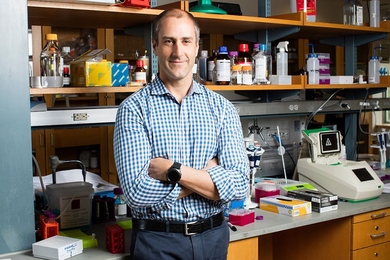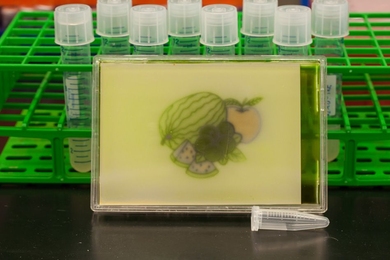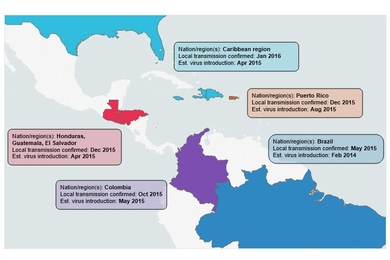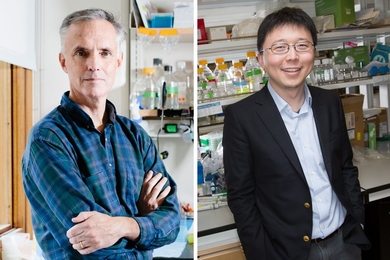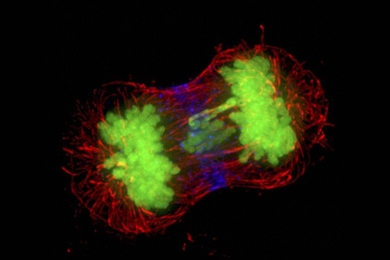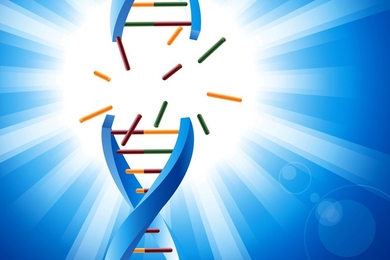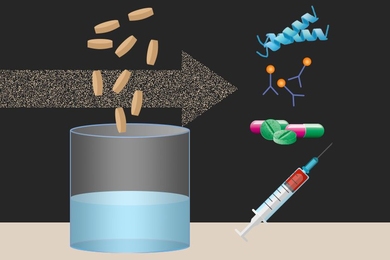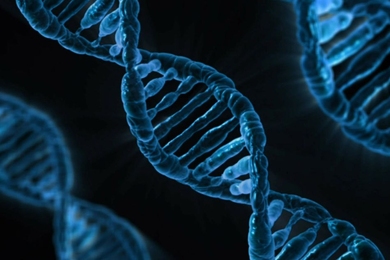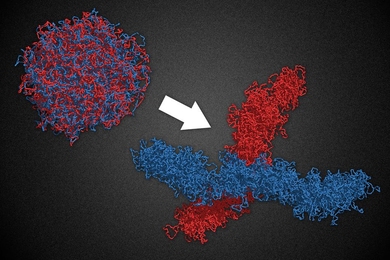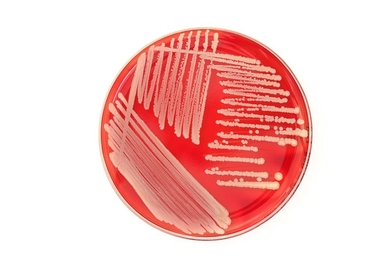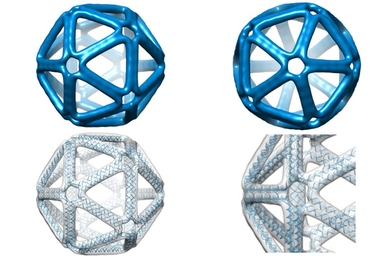Deploying therapeutic payloads to cells
Mark Bathe develops molecular packages for targeted delivery of drugs, vaccines, and gene-editing tools.
Bacteria with multicolor vision
Red, green, and blue light can be used to control gene expression in engineered E. coli.
Zika virus likely circulated in Americas long before its detection
Analysis of largest collection of Zika genomes to date reveals trajectory and evolution of the virus.
Scientists unveil CRISPR-based diagnostic platform
New system adapts tool known for gene editing; to be used in rapid, inexpensive disease diagnosis.
Study helps explain varying outcomes for cancer, Down Syndrome
Differences in chromosome number may underlie variation among genetically identical individuals.
Study suggests complex life was present on Earth 2.33 billion years ago
New estimate predates earliest fossil evidence by 800 million years.
Predicting cancer cells’ response to chemotherapy
Measuring DNA repair capability can reveal tumors’ sensitivity to drugs.
To produce biopharmaceuticals on demand, just add water
Freeze-dried cellular components can be rehydrated to churn out useful proteins.
Targeting genes by the thousands
PhD student Tim Wang uses CRISPR to take a big-picture approach to cancer research.
Researchers identify genome-modifying enzyme linked to Rett Syndrome
Deletion of the HDAC3 gene in the brains of mice causes cognitive and social impairments consistent with Rett Syndrome.
Feng Zhang named 2016 Tang Prize laureate
Broad Institute/MIT scientist among three honored for CRISPR contributions.
Study: Molecular motors shape chromosome structure
By organizing chromosomes into many tiny loops, molecular motors play key role cell division.
New CRISPR system for targeting RNA
Scientists program C2c2, discovered in bacteria as a viral defense mechanism, to manipulate cellular RNA.
Automating DNA origami opens door to many new uses
Like 3-D printing did for larger objects, method makes it easy to build nanoparticles out of DNA.

